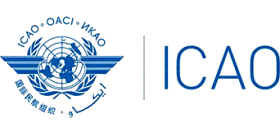 ICAO’s 2025 Safety Report Signals Urgent Need for Global Cooperation Amid Rising Aviation Risks
ICAO’s 2025 Safety Report Signals Urgent Need for Global Cooperation Amid Rising Aviation Risks
Despite the long-term positive trajectory in global aviation safety, the latest data from the International Civil Aviation Organization (ICAO) paints a sobering picture for the industry as it grapples with increased flight volumes and emerging challenges. The 2025 Edition of ICAO’s Safety Report reveals a notable rise in accidents and fatalities in 2024, underscoring the critical importance of intensified international collaboration and innovation to safeguard the skies.
Last year, there were 95 accidents involving scheduled commercial flights worldwide, a significant increase from 66 in 2023. Of these, 10 were fatal accidents, resulting in 296 deaths—more than quadruple the 72 fatalities recorded the previous year. Correspondingly, the global accident rate climbed to 2.56 accidents per million departures, up from 1.87 in 2023. While these figures remain below pre-pandemic levels, they come at a time when the aviation system handled a record-breaking 37 million departures, reflecting the sector’s rapid recovery and growth.
ICAO Secretary General Juan Carlos Salazar reaffirmed the enduring safety of air travel, stating, “Aviation remains the safest form of transport, and the long-term trend demonstrates continuous improvement.” However, ICAO Council President Salvatore Sciacchitano emphasized the gravity of the 2024 statistics, calling them “a tragic and timely reminder” that sustained, collective efforts are essential to progress toward the organization’s ambitious goal of zero fatalities in commercial air transport. He pledged that ICAO will continue to champion robust safety management, technological innovation, and strengthened international cooperation to achieve this vision.
The report highlights four critical high-risk categories responsible for a disproportionate share of fatal accidents and deaths last year: controlled flight into terrain (CFIT), loss of control in flight (LOC-I), mid-air collisions, and runway incursions. Together, these accounted for 25 percent of fatalities and 40 percent of fatal accidents globally. Additionally, turbulence emerged as a major hazard, causing nearly three-quarters of all serious injuries, reflecting the growing impact of weather-related risks on aviation safety.
In response, ICAO is advancing targeted initiatives to mitigate these dangers. Global runway safety action plans are being implemented to reduce runway excursions and incursions, which remain persistent threats at airports worldwide. Enhanced real-time turbulence monitoring systems are also being deployed to equip operators with better tools to anticipate and avoid severe weather, thereby protecting passengers and crew.
The report also draws attention to the escalating threat posed by Global Navigation Satellite System (GNSS) interference, including jamming and spoofing, which can disrupt critical navigation and communication systems. ICAO is actively developing improved guidance and updating navigation manuals to help the industry manage these disruptions. Collaborative efforts with international partners aim to establish protective frameworks to safeguard GNSS infrastructure, which is vital for modern aviation operations.
Another key advancement is the enhancement of accident, incident, and wildlife strike reporting systems. These improvements support a more data-driven approach to safety, enabling earlier identification of emerging risks before they escalate into accidents. ICAO’s commitment to transparency and learning from past events is helping to foster a culture of continuous safety improvement across the global aviation community.
Recognizing the complex security environment, ICAO underscores the importance of strengthening civil-military cooperation to manage conflict-related risks that can jeopardize civilian aviation. This is particularly relevant in regions where geopolitical tensions pose additional hazards to flight operations.
Looking ahead, ICAO is preparing for the integration of next-generation technologies by developing safety frameworks for the safe inclusion of unmanned aircraft systems (UAS) and advanced air mobility (AAM) vehicles into traditional airspace. This forward-looking approach aims to ensure that innovation does not compromise safety as the aviation landscape evolves.
Regionally, the report reveals varied safety outcomes. The Asia-Pacific and Europe/North Atlantic regions each recorded three fatal accidents during the period, while a single tragic event in South America accounted for 62 fatalities. The Asia-Pacific region experienced the highest overall fatality count, followed by South America and Europe/North Atlantic. ICAO’s regional offices are actively engaged in tailored support and coordination efforts to address the specific safety challenges faced by these areas, leveraging implementation support mechanisms to sustain and enhance safety performance.
For Africa’s aviation sector, these global trends serve as a crucial reminder of the ongoing need to strengthen safety oversight, invest in infrastructure and training, and embrace collaborative initiatives. As flight volumes continue to grow across the continent, aligning with ICAO’s safety priorities will be essential to protect passengers, build confidence, and support the sustainable expansion of African air travel.
